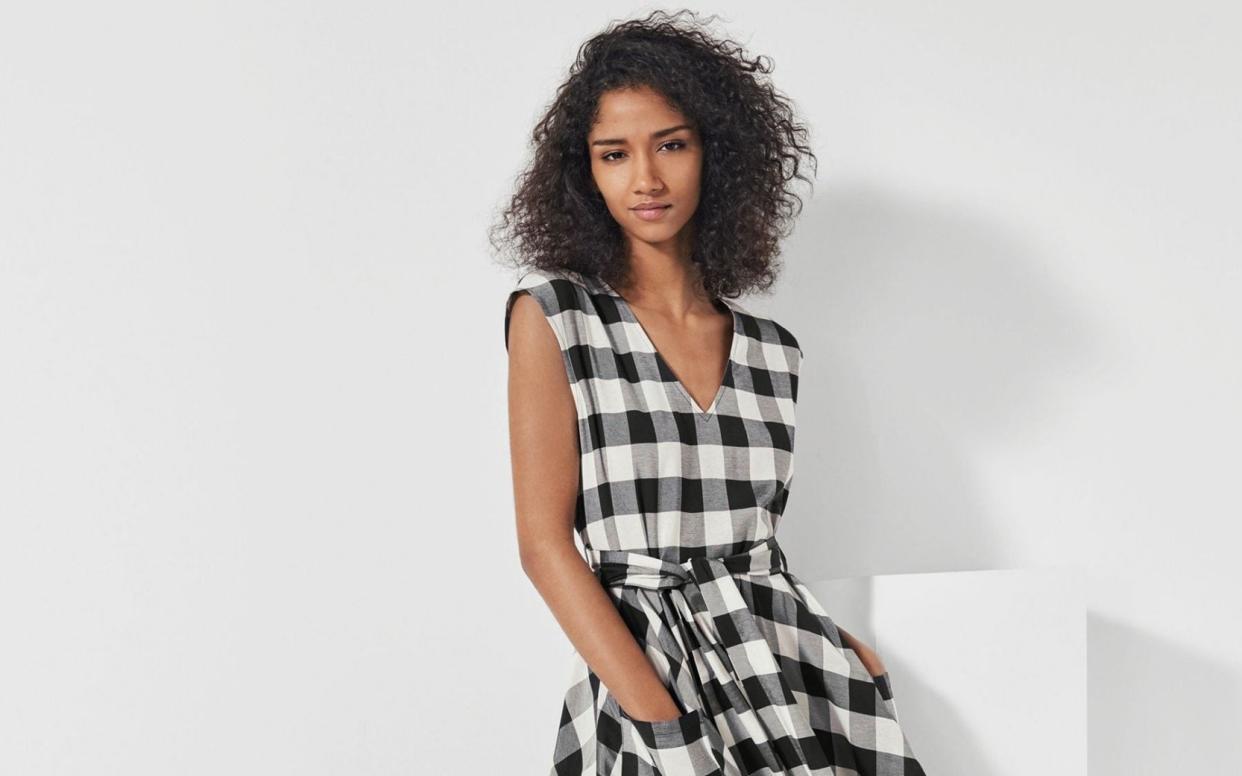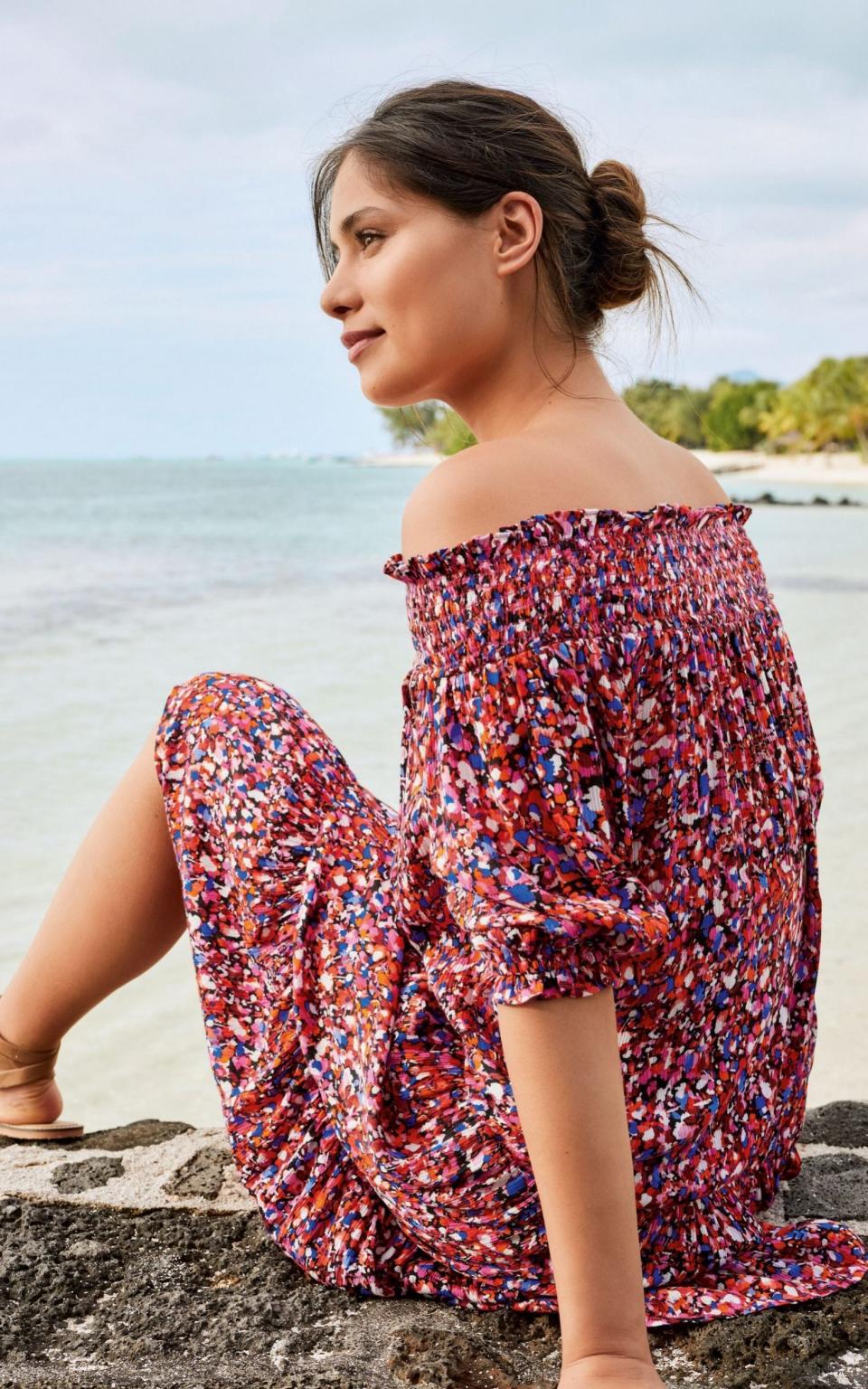What's behind Next's surprise high street success?

There’s a lilac jumpsuit on the Next website that I’ve had my eye on for a couple of weeks. It’s from the Label/Mix collection, created in collaboration with LF Markey, and at £119, is just the kind of fun-yet-functional hero piece my wardrobe needs.
I also know that I’m unlikely to turn up to a garden party or picnic in the same outfit as anyone else, because, as far as fashion is concerned, Next is a bit of a dark horse. But if its latest financial results are any indication it’s not short of fans. In fact, it appears to have weathered the pandemic more successfully than other high street stalwarts.
Take John Lewis, which is to close eight stores permanently, and Marks & Spencer, which says it is cutting 950 jobs. Meanwhile, Next has reported a lower-than-expected fall in sales, bucking industry trends. It had been expecting a 56 per cent drop, but actually only experienced a 28 per cent fall, and still expects to end the year in the black.

Jumpsuit, £119, Mix/LF Markey at Next
This is all the more remarkable when you recall that it actually paused online sales for a period in April to help its warehouse staff comply with social distancing, followed by restrictions on the number of items consumers could purchase on a given day.
It helps that Next was in a healthy financial position before lockdown – meanwhile, year-on-year profits at John Lewis had fallen 65 per cent in January, while M&S was suffering from the impact of buying missteps, hampering its Christmas sales.
Next also had a strong e-commerce business – online trade accounts for about half of all sales – so when stores were forced to close, it had less of an impact than it did on other brands.

Off the shoulder dress, £30, Next
But the thing that unexpectedly buoyed sales this quarter, according to the retailer, is that customers have not been returning as many purchased goods after lockdown as predicted. Executives say this is because most online shoppers had been buying childrenswear, casualwear, sportswear, nightwear and homeware – all categories that don’t generate many returns – while dresses and suiting, where sales slowed the most, tend to have more issues with fit, so are more likely to be returned.
It’s clear that Next’s designers and buyers have been getting the product right, too. Take the fashion, which is affordable and just trendy enough. Highlights this season include shirred, off-the-shoulder dresses (£30, next.co.uk) in the style of Sleeper’s £245 must-have, and cottagecore-friendly checks, while the Label/Mix offering features investment pieces like my lilac jumpsuit, created in collaboration with cult fashion brands.
It also partners with carefully chosen celebrities – including presenter Emma Willis and JLS singer Marvin Humes – who speak to its shoppers. It stocks a wide range of other labels, too, including Whistles, Joules and Superga, meaning shoppers only need to browse one website to view options from several different labels. This positions it as a slightly more grown-up alternative to Asos. It has just rescued the UK arm of Victoria’s Secret from administration too, adding another label to its roster.
A post shared by NEXT (@nextofficial) on Aug 4, 2020 at 5:53am PDT
Its strongest suits are in homewares and childrenswear, though. For Berkshire-based interiors influencer Anthea Husbands, aka @up2datehome on Instagram, there’s always a lot of love from her 146,000 followers whenever she features Next. “Most things I post from Next have better engagement than from others,” she says. “I always get comments like, ‘I love Next,’ or ‘I didn’t know Next was doing things like this.’ ”
It has a good handle on trends, too, she says. “There has been more of a move to wicker, rattan and natural materials of late – Next has answered this by putting together a kitchen range with a farmhouse feel... attracting a younger demographic who may have never shopped in Next for clothing but have spotted some on-trend items for the home.”
The childrenswear is a favourite with parents, too, spanning everything from school uniforms to party frocks. T-shirts, which kids can get through at quite a rate, are priced from just £2.50, and feature tasteful stripes and slogans.
Girls’ dresses take a lead from womenswear trends with tiered skirts and ditsy prints, and start at just £6. “Some of my daughter’s favourite pieces are from Next,” says Rebecca Sharp, 23, from Leeds, who regularly tags Next in posts of her two-year-old. “It’s one of our favourite stores on the high street as it always seems to have what we’re looking for… Although for us, it’s on the pricier side, it’s definitely worth the extra spend for the quality.”
A post shared by r e b e c c a 🌈 (@becisnotonfire) on Aug 2, 2020 at 10:11am PDT
That quality-to-price ratio is at the core of Next’s appeal, even when it comes to furniture, where the spend per customer is significantly higher.
“Quality sells,” says Husbands. “The old saying is that you get what you pay for, and if you are buying a larger piece of furniture you want it to last.”
It’s certainly true of my jumpsuit – it has a premium price by Next standards, but it’s also a premium product, made from soft-yet-tough Tencel denim. In fact, I’m adding it to my basket now before anyone reading this gets the same idea…
For more news, analysis and advice from The Telegraph's fashion desk, click here to sign up to get our weekly newsletter, straight to your inbox every Friday. Follow our Instagram @Telegraphfashion

 Yahoo News
Yahoo News 
